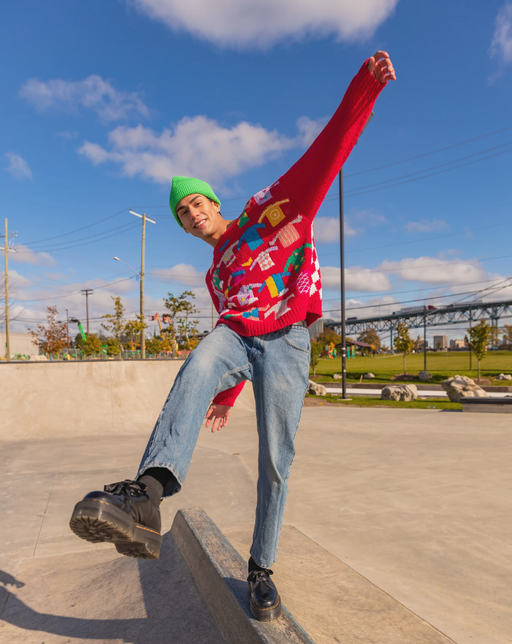
Signs of LSD or Hallucinogen Use
Daniel PattersonHallucinogens like LSD (Lysergic Acid Diethylamide) may not be as common among teens as other substances, but they still present serious risks. These powerful drugs alter perception, mood, and thought processes, leading users to experience a distorted sense of reality. Understanding the signs of hallucinogen use can help parents recognize potential substance issues early and provide the support their teen needs.
Here’s a guide to identifying the physical, behavioral, and emotional signs of hallucinogen use in teens, along with information on the potential long-term impact.
Physical Symptoms of Hallucinogen Use
LSD and other hallucinogens cause noticeable physical changes that may signal substance use. Because hallucinogens affect the nervous system, they can result in both minor and more severe physical symptoms.
Common Physical Signs:
- Dilated Pupils: LSD stimulates the sympathetic nervous system, often causing pupils to dilate significantly. This symptom can be an immediate indicator of hallucinogen use.
- Sweating and Increased Heart Rate: LSD may cause the body to overheat, leading to sweating, flushed skin, and a rapid heart rate. According to the National Institute on Drug Abuse (NIDA), teens using hallucinogens may appear physically unsteady or complain of dizziness or nausea.
- Dry Mouth and Blurred Vision: Users may experience dry mouth, a common side effect of hallucinogens, along with visual disturbances or blurred vision.
What You Can Do: If you notice any of these physical symptoms, try to observe patterns. Sudden changes in appearance, such as dilated pupils or coordination issues, may be more noticeable if they happen inconsistently, such as after parties or specific events. Address these changes immediately with your teen for early intervention.
Behavioral Changes to Watch For
Hallucinogens impact how users experience time, space, and their surroundings, often leading to behavior that appears unusual or erratic. Teens under the influence of hallucinogens may seem out of touch with reality, disconnected, or disoriented.
Signs of Behavioral Changes:
- Distorted Perceptions: Teens on LSD may express confusion about time and space, seeing or hearing things that aren’t there. They may report “seeing colors” or “hearing sounds” in a way that seems exaggerated or unreal.
- Erratic or Confused Speech: Conversations may be hard to follow, with teens jumping from one topic to another or struggling to make sense. They may also appear paranoid, reacting strongly to noises or movements around them.
- Uncharacteristic Mood Swings: Hallucinogens can produce extreme emotions, swinging from intense euphoria to fear or sadness. The Substance Abuse and Mental Health Services Administration (SAMHSA) emphasizes that these rapid mood shifts are common, especially if the teen is experiencing a “bad trip.”
What You Can Do: If you observe any of these behaviors, approach your teen calmly and avoid confrontation. Create a safe space for them to talk openly about any stress or curiosity they might have about drug use. Addressing these behaviors early can help prevent further experimentation.
Emotional Symptoms and Psychological Impact
Hallucinogens can have an intense emotional and psychological impact on teens. Along with distorted perceptions, these drugs often cause feelings of detachment and emotional instability, which may linger long after the drug’s effects wear off.
Common Emotional Symptoms:
- Detachment from Reality: Teens may appear disconnected from reality, describing experiences or “visions” that don’t align with their usual behavior.
- Panic or Anxiety: Hallucinogens can lead to overwhelming feelings of fear or paranoia, particularly during a “bad trip.” According to the American Psychological Association (APA), these experiences can be traumatic, causing panic attacks or bouts of intense anxiety.
- Prolonged Paranoia or Fear: Even after the effects of the drug wear off, some teens may experience flashbacks or lasting paranoia. This can lead to social withdrawal, difficulty concentrating, and an ongoing sense of unease.
What You Can Do: Encourage your teen to share their feelings openly, without fear of punishment. If they report feelings of anxiety or paranoia, consider reaching out to a counselor or mental health professional who specializes in adolescent substance use.
Long-Term Impact of Hallucinogen Use
Even a single use of LSD can have lasting effects on a teen’s mental health, such as recurring flashbacks or hallucinogen persisting perception disorder (HPPD), in which users experience ongoing visual disturbances. This can affect academic performance, social interactions, and overall well-being.
Potential Long-Term Effects:
- Flashbacks: Flashbacks are spontaneous recurrences of hallucinogenic experiences, which can happen without warning. Teens may re-experience visual distortions, intense emotions, or paranoia long after using LSD.
- Hallucinogen Persisting Perception Disorder (HPPD): This rare condition causes visual disturbances that persist for months or even years after hallucinogen use. The Centers for Disease Control and Prevention (CDC) warns that HPPD can significantly impact a person’s mental health and daily functioning.
What You Can Do: If your teen experiences flashbacks or persistent visual disturbances, seek support from a mental health professional. Therapy can help manage symptoms and provide coping strategies for dealing with ongoing effects.
How to Approach the Conversation
Starting a conversation about potential hallucinogen use can be difficult, but an empathetic, non-judgmental approach can help open communication. Here are some tips for navigating this discussion:
- Express Concern, Not Anger: Let your teen know that you’re worried about their well-being. Avoid accusatory language, and instead frame the conversation to understand and support them.
- Ask Open-Ended Questions: Encourage your teen to talk by asking open-ended questions, such as, “Have you heard much about hallucinogens like LSD?” or “What do you think about the risks involved with experimenting with these substances?” or “Are you concerned about addiction and negative impacts of using this drug?”
- Offer Support: Make it clear that you’re there to help them make safe choices, whether that means avoiding substances or finding healthier ways to cope with stress.
Conclusion
Recognizing the signs of hallucinogen use can help parents identify potential issues early and provide meaningful support. By understanding the physical, behavioral, and emotional symptoms of LSD use, parents can better protect their teen’s health and well-being. Keep communication open, stay informed, and reach out to professional resources if needed to ensure your teen has the support they need.
References
- National Institute on Drug Abuse. (2021). "Hallucinogens DrugFacts." Retrieved from NIDA Website.
- Substance Abuse and Mental Health Services Administration. (2020). "Recognizing LSD Use in Teens." Retrieved from SAMHSA Website.
- American Psychological Association. (2021). "Understanding the Emotional Effects of Hallucinogen Use." Retrieved from APA Website.
- Centers for Disease Control and Prevention. (2021). "Hallucinogen Persisting Perception Disorder." Retrieved from CDC Website.











